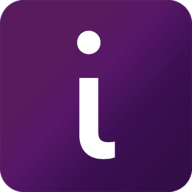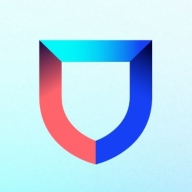


Acunetix and Lacework FortiCNAPP are competitors in the cybersecurity solutions market, focusing on vulnerability scanning and security monitoring. Acunetix seems to have the upper hand in deep vulnerability scanning and generating customizable reports, while Lacework FortiCNAPP excels in continuous monitoring and compliance reporting for cloud environments.
Features: Acunetix is recognized for its deep scanning capabilities with minimal false positives, comprehensive scanning, and detailed customizable reports. Lacework FortiCNAPP stands out for its continuous security monitoring, anomaly detection, and compliance insights, particularly in public cloud environments.
Room for Improvement: Acunetix needs improvement in high pricing, complex licensing, slower scanning speeds, and better web service scanning. Users request enhanced false positive reduction and more flexible integration options, along with improved reporting and authentication settings. Lacework FortiCNAPP should focus on simplifying integration, improving alert and reporting systems, and enhancing remediation features and cloud data management.
Ease of Deployment and Customer Service: Acunetix offers cloud and on-premises deployment with responsive technical support, although it can be slow for complex issues. Hybrid deployment is available, but there are occasional delays in support responses. Lacework FortiCNAPP is mainly cloud-focused, with responsive customer service but limited immediate technical support availability. Users value its guidance but suggest more clarity and accessibility.
Pricing and ROI: Acunetix is seen as expensive, with domain-based pricing that escalates with sub-domains. Despite this, users report decent ROI due to its thorough scanning abilities. Lacework FortiCNAPP, while also costly, is viewed as affordable compared to other SaaS solutions, praised for its transparent and flexible pricing. Users of both solutions suggest more competitive pricing and clearer pricing structures.
| Product | Market Share (%) |
|---|---|
| Zafran Security | 1.0% |
| Acunetix | 1.2% |
| Lacework FortiCNAPP | 1.3% |
| Other | 96.5% |



| Company Size | Count |
|---|---|
| Small Business | 15 |
| Midsize Enterprise | 5 |
| Large Enterprise | 14 |
| Company Size | Count |
|---|---|
| Small Business | 4 |
| Midsize Enterprise | 4 |
| Large Enterprise | 3 |
Zafran Security integrates with existing security tools to identify and mitigate vulnerabilities effectively, proving that most critical vulnerabilities are not exploitable, optimizing threat management.
Zafran Security introduces an innovative operating model for managing security threats and vulnerabilities. By leveraging the threat exposure management platform, it pinpoints and prioritizes exploitable vulnerabilities, reducing risk through immediate remediation. This platform enhances your hybrid cloud security by normalizing vulnerability signals and integrating specific IT context data, such as CVE runtime presence and internet asset reachability, into its analysis. No longer reliant on patch windows, Zafran Security allows you to manage risks actively.
What are the key features of Zafran Security?
What benefits can users expect from Zafran Security?
In industries where security is paramount, such as finance and healthcare, Zafran Security provides invaluable protection by ensuring that only exploitable vulnerabilities are addressed. It allows entities to maintain robust security measures while allocating resources efficiently, fitting seamlessly into existing security strategies.
Acunetix Web Vulnerability Scanner is an automated web application security testing tool that audits your web applications by checking for vulnerabilities like SQL Injection, Cross site scripting, and other exploitable vulnerabilities.
Lacework FortiCNAPP provides robust cloud security, combining vulnerability management and multi-cloud insight with user-friendly controls, machine learning detection, and compliance support.
Lacework FortiCNAPP specializes in cloud security by merging machine learning anomaly detection with agent-based vulnerability management to offer detailed alerts and compliance reports. Its comprehensive approach allows continuous monitoring across AWS and Kubernetes, providing insights from an attacker's perspective. The platform offers automation and seamless Slack integration, facilitating collaborative and efficient cloud security management. Users value its ability to handle multi-cloud environments and scan IAC scripts, configurations, and compute nodes across AWS and GCP.
What are the key features?Organizations across sectors leverage Lacework FortiCNAPP for cloud security, focusing on compliance, security posture, and vulnerability management. It is widely used for monitoring AWS and Kubernetes environments, scanning IAC scripts, configurations, and securing compute nodes. It supports multi-cloud security posture management and log ingestion, enabling companies to maintain strong cloud infrastructures without dedicated security layers.
We monitor all Vulnerability Management reviews to prevent fraudulent reviews and keep review quality high. We do not post reviews by company employees or direct competitors. We validate each review for authenticity via cross-reference with LinkedIn, and personal follow-up with the reviewer when necessary.